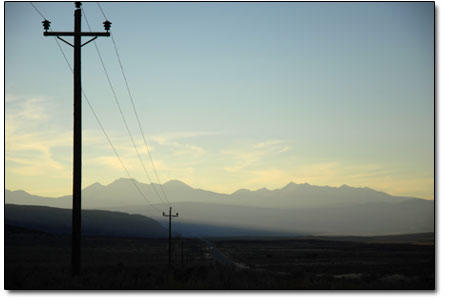|
| ||
| The hot spot SideStory: Revisiting radon – EPA goes back to the radiation drawing board
by Will Sands Southwest Coloradans still reeling from the last uranium boom were recently shut out by the U.S. Court of Appeals. In late August, the court ruled in favor of Union Carbide Corp. and against dozens of residents of the former town of Uravan who were seeking recompense for radiation illness. The nearby town of Uravan, located north of Dove Creek along the San Miguel River, was once a high point in the history of radioactivity. Madam Curie pioneered much of her research on radiation there in the 1920s. In 1942, the U.S. government built facilities in Uravan to process uranium ore for the Manhattan Project, which led to the development of the atomic bomb, the eventual destruction of Hiroshima and Nagasaki, and the end of World War II. In recent decades, uranium was mined throughout the Colorado and Uncompahgre plateaus and then refined at Uravan’s Union Carbide mill into fuel for nuclear power plants. But this boom also came at a staggering price. Extremely high radioactivity levels were detected in the once thriving community in the early 1980s. The danger was so significant that Uravan was designated as a Superfund site in 1986, and the town that once housed 800 residents was totally dismantled and bulldozed. In the more than two decades since, millions of tons of dirt have been cleansed of radioactive material or consolidated and capped. The price-tag for the clean-up exceeded $120 million when it was finally completed last fall. However, Uravan is continuing to send shockwaves. In 2004, 82 one-time residents of Uravan banded together and filed suit against Union Carbide. The plaintiffs alleged that they had suffered from a variety of illnesses, genetic disorders and untimely deaths because of mining and milling in and around Uravan. The suit went on to charge Union Carbide with gross negligence claiming that “hazardous substances, both radioactive and nonradioactive, were spread throughout the town.” The former residents of Uravan got grim news on Aug. 21, when the U.S. Court of Appeals announced it would uphold a U.S. District Court decision that dismissed their damage claims. In its decision, the court cited the Price-Anderson Act of 1957 and said the Uravan residents’ medical claims fell short for lack of evidence of “bodily injury.” The court noted that given numerous toxic substances present in the world, it was impossible to tie Uravan residents’ woes directly to mining and milling of uranium. “One who suffers that cancer does not have a cause of action based on each such substance to which he was exposed,” the court wrote in its decision. The court then went on to minimize the plaintiffs’ claims to have suffered “DNA damage and cell death” while living and working in Uravan. “In our view, ‘DNA damage and cell death,’ which creates only a possibility of clinical disease, does not constitute a ‘bodily injury,’” the court wrote. Based on these facts, the court then dismissed the appeal. The decision was especially disturbing for Travis Stills, of the Durango-based Energy Minerals Law Center. Stills and the nonprofit law firm serves communities impacted by mining and energy development. “I really don’t have words to describe a decision where ‘DNA damage and cell death’ incurred by the Uravan residents are not considered ‘bodily injury,’” Stills said. “The fact is that this case concerned Uravan, where the contamination was so pervasive that the entire town was torn down and buried.” Stills added that the decision could echo far beyond Uravan. He pointed to the radioactive remnants of Union Carbide’s uranium mill in Durango. Though the Smelter site was cleaned up and remediated throughout the 1980s, a toxic legacy remains. Looking at the recent court decision, he noted that Durangoans who worked and lived in proximity to the toxic Smelter site could have reason for concern. “Those who have lived in the shadow and dust of Union Carbide’s uranium mill, which operated for years on the banks of the Animas River, should be concerned,” he said. “The uranium and nuclear industry now enjoy expansive immunity through federal laws such as Price-Anderson.” With this in mind, Stills urged Four Corners residents to look to the future rather than the past. He pointed to Energy Fuels’ efforts to bring a new uranium mill to the nearby Paradox Valley as well as the major resurgence of uranium mining in the region. With this new boom in mind, he advocated closing industry loopholes so that future generations do not suffer the same impacts as the residents of Uravan. “Justice may never be achieved for the past acts of this industry,” he said. “But the laws that eliminate or reduce liability for companies engaged in production, disposal and use of nuclear fuels need to be reconsidered for all current and future activities.” •
|


